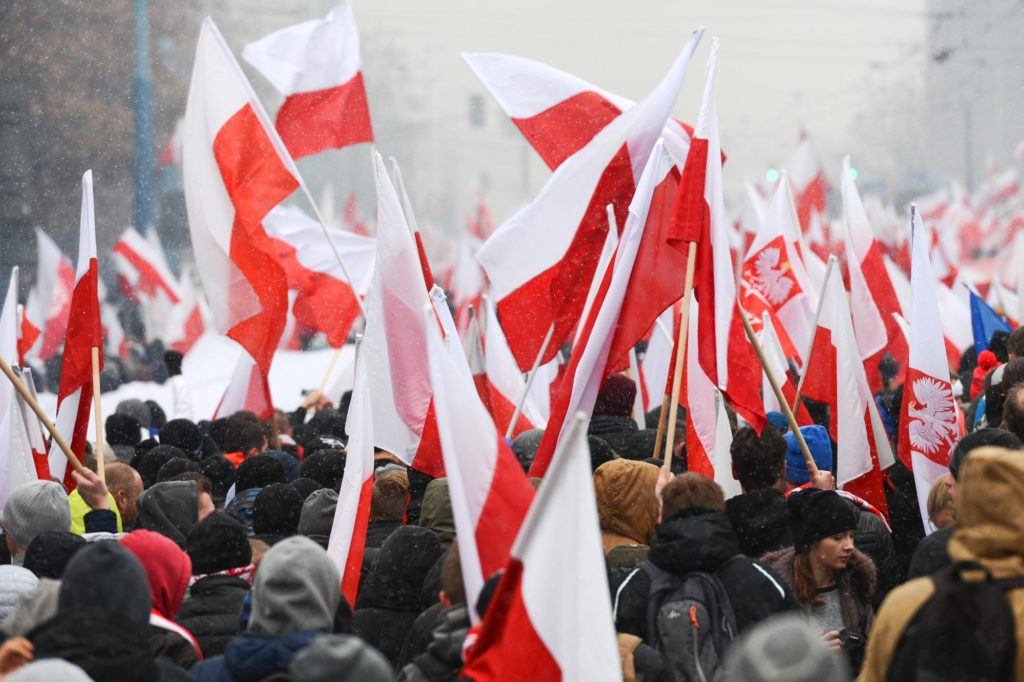Divided Poland celebrates National Independence Day, 2016. Credit: Beata Zawrzel/SIPA USA/PA Images
I have often thought, and written, that coverage of Poland in the Western media is disproportionately negative – for all of its controversies, the nation is, among other things an undeniable economic success story. It has doubled its GDP since 1990, and its economy is still growing. Foreign investment has swelled in strength and with safe, thriving and historic cities like Krakow, Warsaw and Gdansk it has become a very popular tourist destination.1
As with most Western democracies, however, the fruits of success are not apportioned equally. Some places, and some people, have done better than others. The success of the Law and Justice (PiS) party in Poland’s 2015 elections had a lot to do with voters’ frustration with the Civic Platform (PO) government’s perceived complacence in improving the communities and lives of those left behind. This, combined with cultural change, is producing an increasingly divided Poland.
The most famous conception of Poland’s sociocultural divides is “Poland A” and “Poland B”, with the former being richer and more metropolitan and the latter being poorer and less developed. Geographically, “Poland A” is traditionally described as being to the west of the Vistula (and including Warsaw and Kraków as well as Łódź and Wrocław) and “Poland B” to its east (including Lublin and Białystok as well as much of Poland’s agricultural land).
There is some truth to the divide between the west and east. Historically Poland was divided, literally – between Prussia, Russia and Austria. “Prussian” Poland, which now makes up much of Poland A was industrially powerful while “Austrian” and “Russian” Poland, which now make up much of Poland B, were poorer and less developed. Infrastructure – which now includes roads, airports and Internet access – has remained stronger in the west, cities in the west attract greater investment than those in the east.2
The divide has also been reflected in voting patterns. The more socially and economically liberal party, PO, dominated in the west in the 2007 elections while the socially conservative and economically populist PiS dominated in the east.
Yet, it would be wrong to think of Poland in these sweeping binary terms. Ideas of the richer west versus the poorer east are compromised by the existence of struggling regions like Warmian-Masuria in Poland A and thriving cities like Rzeszów and Lublin in Poland B. Nor is Poland A uniformly liberal – PiS made significant inroads into the west during their triumphant 2016 election campaign.

 Main Edition
Main Edition US
US FR
FR







Join the discussion
Join like minded readers that support our journalism by becoming a paid subscriber
To join the discussion in the comments, become a paid subscriber.
Join like minded readers that support our journalism, read unlimited articles and enjoy other subscriber-only benefits.
Subscribe